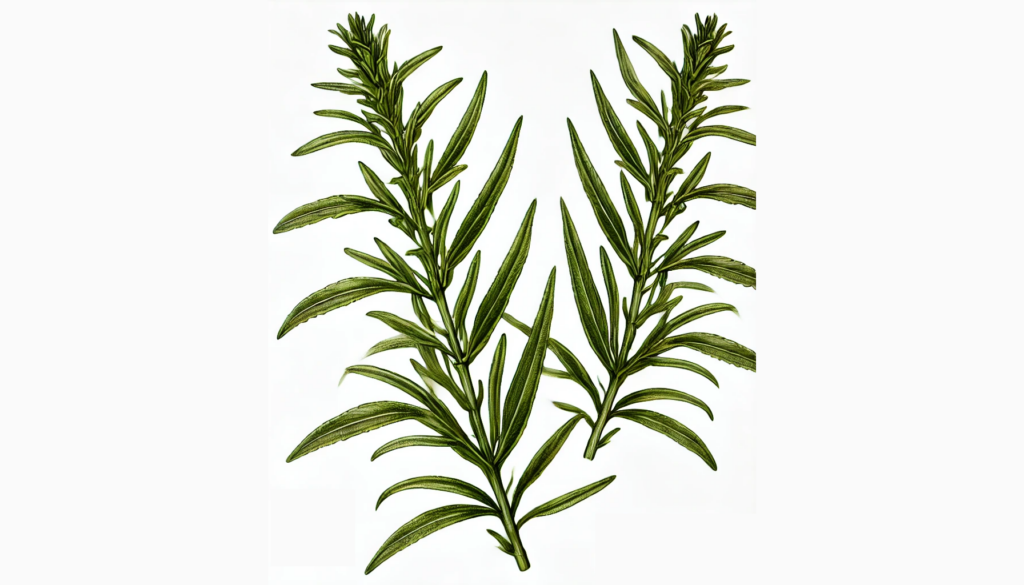

Home » Cat Plants » How the Tarragon Plant is a Toxic for Cats?

Tarragon (Artemisia dracunculus), also known as estragon, is a perennial herb in the sunflower family that is toxic to cats if ingested. While not typically deadly, tarragon contains essential oils that can cause gastrointestinal upset and other health issues in felines.
This culinary herb is commonly found in herb gardens, kitchen gardens, and as a seasoning in various dishes.
Ingestion may cause mild gastrointestinal upset, but is generally not life-threatening.
Ingestion can result in mild symptoms like vomiting, diarrhea, or drooling. Rarely fatal but may require veterinary care.
Eating these plants can lead to more pronounced symptoms like abdominal pain, lethargy, or difficulty breathing. Veterinary intervention may be necessary.
Ingesting even small amounts can cause severe symptoms like organ damage, seizures, or cardiac failure without rapid treatment.
All parts of these plants are extremely poisonous to cats and can quickly lead to death, even with immediate veterinary care.
** Please note: Please note that toxicity level can vary based on the amount ingested and the specific cat. It's always best to keep these plants completely inaccessible to cats and seek immediate veterinary care or call the poison hotline if you suspect your cat has ingested any part of a toxic plant.
If a cat ingests tarragon, it may experience various symptoms due to the plant’s toxic essential oils. These symptoms can range from mild to moderate, depending on the amount consumed. Common signs that your cat may have eaten tarragon include:
In severe cases, tarragon ingestion may lead to nervous system depression, seizures, or liver damage. If you suspect your cat has eaten tarragon, contact your veterinarian immediately.
If you bring your cat to the veterinarian after suspecting tarragon ingestion, they will likely follow these steps to diagnose and treat your feline friend:

A: Yes, Tarragon is harmful to cats. The plant contains compounds that can cause mild to moderate gastrointestinal upset if ingested by your feline friend.
A: Symptoms of Tarragon poisoning in cats include vomiting, diarrhea, and drooling. If your cat exhibits any of these symptoms, it’s important to contact your veterinarian immediately.
A: Tarragon is moderately toxic to pets, including cats and dogs. While severe reactions are rare, ingestion can lead to significant discomfort and requires veterinary attention.
A: Cats can recover from Tarragon poisoning with prompt veterinary care. Most cases are mild, but it’s essential to monitor your cat for any worsening symptoms.
A: It is not entirely safe to grow Tarragon in a garden with cats due to its toxic properties. To ensure your cat’s safety, consider planting non-toxic alternatives like basil or parsley.
A: If your cat ingests Tarragon, monitor them for any signs of illness and contact your veterinarian. Early intervention can help manage symptoms and prevent further complications.
Tarragon is native to Siberia and other parts of Eurasia, but it has been cultivated for culinary and medicinal purposes for centuries. The ancient Greeks used tarragon to treat toothaches, while the Arabs believed it could cure snake bites. In medieval times, tarragon was thought to ward off dragons and serpents.
French tarragon, the variety most commonly used in cooking, was introduced to Europe in the 16th century and has since become a staple in French cuisine. It is a key ingredient in Béarnaise sauce and is often used to flavor chicken, fish, and egg dishes.
Please note: The information shared in this post is for informational purposes only and should not be considered as veterinary medical advice.
🐾 A hilarious or heart-melting cat video
🐾 Our latest paws-on review of a cool cat toy